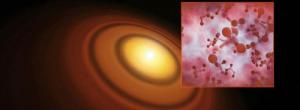Science
Ultrathin, flat lens resolves chirality and color: Multifunctional lens could replace bulky, expensive machines

Imaging with the multispectral chiral lens forms two images of the beetle, Chrysina gloriosa, on the color camera. The left image was formed by focusing left-circularly polarized light reflected from the beetle and the right image was formed from right-circularly polarized light. The left-handed chirality of the beetle's shell can clearly be seen.
- Read more
- 323 reads
NASA Technology Applied in Breast Cancer Study
Getting spacecraft ready for launch may have more to do with medical research than you think. For a new study on microbes that may be associated with a history of breast cancer, researchers at NASA's Jet Propulsion Laboratory, Pasadena, California, employed the same sequencing and analysis methods used for examining bacteria in spacecraft assembly rooms. Those techniques were designed for planetary protection -- ensuring that NASA spacecraft do not contaminate other worlds.
- Read more
- 326 reads
New imaging method reveals nanoscale details about DNA: Enhancement to super-resolution microscopy shows orientation of individual molecules, providing a new window into DNA's structure and dynamics

A new imaging technique allows researchers to image both the position and orientation of single fluorescent molecules attached to DNA.
- Read more
- 384 reads
Researchers refine method for detecting quantum entanglement
Entanglement in quantum physics is the ability of two or more particles to be related to each other in ways which are beyond what is possible in classical physics.
- Read more
- 337 reads
Gluttonous Star May Hold Clues to Planet Formation

The brightness of outbursting star FU Orionis has been slowly fading since its initial flare-up in 1936. Researchers found that it has dimmed by about 13 percent in short infrared wavelengths from 2004 (left) to 2016 (right).
- Read more
- 347 reads
Human Rights
Fostering a More Humane World: The 28th Eurasian Economic Summi

Conscience, Hope, and Action: Keys to Global Peace and Sustainability

Ringing FOWPAL’s Peace Bell for the World:Nobel Peace Prize Laureates’ Visions and Actions

Protecting the World’s Cultural Diversity for a Sustainable Future

Puppet Show I International Friendship Day 2020






